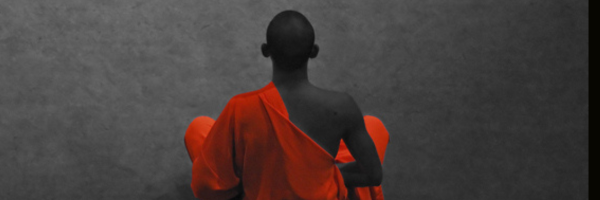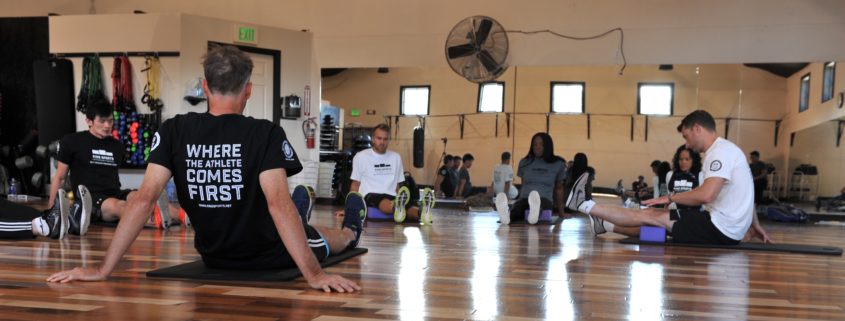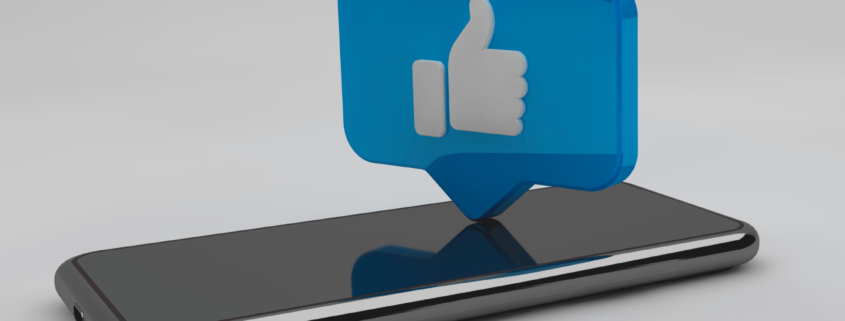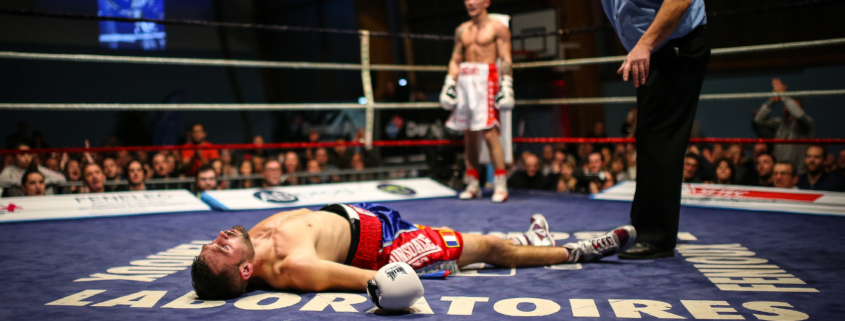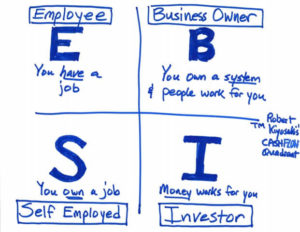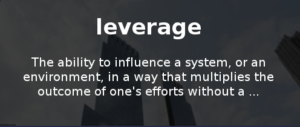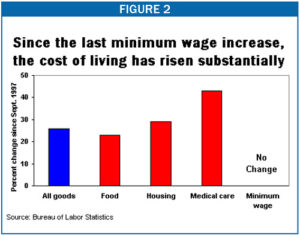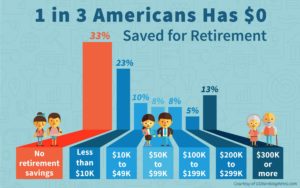The Way of the Physical Preparation Coach
The following is an abridged version of The Way of the Physical Preparation Coach.
Introduction
The content is written for those who seek a higher level of mastery of my approach to physical preparation. Several concepts deserve discussion at this point.
I seek not to teach you what to think, but how to think. Therefore, I choose not to use the word ‘system’ in describing my approach. Instead, I chose the word ‘philosophy’, and believe this is more accurate.
I have divided this book in to five sections. Each section is devoted to key philosophies as they relate to the ‘being’ or ‘thinking’ of a physical preparation coach, although I stress these divisions are arbitrary.
This book is about philosophies that I have arrived at. I trust they serve you as well as they have served me.
Part One – Professional Philosophies for the Physical Preparation Coach
Only results matter.
It doesn’t matter what you, another person, textbook or research article thinks/claims should happen as far as the training outcome – all that matters is what is happening, what was the outcome. Value this above all else and respond accordingly, with no attachment to your prior perceptions where the message is to the contrary.
Do no harm.
The aim of physical preparation training is to improve the body in whatever specific way the athlete/client seeks. It is your responsibility to understand the impact of the training you provide, and ensure it does no harm. If in doubt, seek guidance or assistance. This may involve referrals to other health care providers.
Do the least amount of training needed to get the result you want.
Seek to identify how little you need to do to achieve your training and competitive results. This approach is less draining on the athlete’s recovery ability and reduces the wear and tear on the body.
The goal of a training session should be to do the amount that will result in the best improvement into the next workout of the same kind, not to do as much as one can.
The underlying deciding factor in how much to do in each workout should be found in the answer to the question ‘What amount done today will give me the best improvement into the next session?’
I don’t know.
I don’t know how to design a program for anyone – until I receive more information from/about that person. I combine my knowledge, experience and intuition with their knowledge, experience, and intuition – then we have information to create a program.
Transfer is far more important than specificity.
Whilst the principle of specificity is important, it is not as important as the principle of transfer. This principle reinforces training that, irrespective of its apparent specificity, transfers more effectively to the specific event.
Flexibility can be trained and expressed statically or dynamically, or a combination of both.
As with any physical performance, there is debate and misinterpretation of how to train for what is seen to be the way it is expressed. Those who have been misled down the road of over-exaggeration of the role of specificity may see flexibility being expressed dynamically and conclude that this is the only way to train it for that event. This is not so. Remember, transfer of training effect is more important than apparent specificity.
There is very limited correlation between what can be lifted in the gym and the scoreboard.
The only sports where how much weight you can displace in the gym are fully correlated with success are the lifting sports themselves – power lifting and Olympic lifting. From there the correlation slides downhill quickly. There is no place for justification of the success of the sports strength program based on the amount of weight lifted in the gym when there is no relationship between the two. Rather, the focus should be on the scoreboard.
A model of optimum movement in speed relevant to the athletes’ needs is needed.
The physical preparation coach should have developed a model of movement that is considered in a general sense optimal for each type of speed used by each position of athlete and use this as a guide on which to move the athlete towards.
Fatigue masks fitness.
When people judge performance of an athlete or team in a mixed energy system or endurance-based sport, they are seeing the work capacity. When the work capacity is low, the most common and erroneous knee-jerk reaction is that they are ‘not fit enough’, and the response is to do more endurance-based training.
The training effect is optimized when it is considered as a combination of training and recovery.
The training effect that happens to your body is not simply a product of your training. If combined with recovery, you can achieve a far greater result than the impact of training alone. In fact, the short-term impact of training is to reduce the work capacity of the body. It is the recovery from this that results in potentially rebounding to levels of work capacity in excess of your prior levels. A new baseline.
Two major focuses of physical preparation coaches are injury prevention and performance or function enhancement. I believe injury prevention to be more important.
When training an individual, first seek to remove or reduce their injury potential, then shift the focus to performance/function enhancement. This does not mean that one needs to be done before the other is worked on. They can be trained concurrently. Simply prioritize injury prevention initially and ensure that any concurrent performance/function enhancement training does not interfere with the injury prevention focus and progress
Part Two – Personal Philosophies for the Physical Preparation Coach
Detach from the outcome.
This final point or mantra reinforces that we should not get attached to the way we do things today. If we find a better way tomorrow, we should feel no attachment to the limitations of our current way and be willing to replace any aspect of our thoughts or actions with more effective thoughts or actions.
When the student is ready the teacher will appear.
This is a fantastic little saying, but it is more than just a sentiment. I have seen the difference between situations where a person is interested, and where a person is truly committed to being a student. If you have a burning desire to learn, you will ultimately find a teacher appearing. You may be surprised to know how many potential teachers are watching you, waiting to see you show the commitment to learning from them that warrants or motivates them to want to avail themselves as your teacher.
Trust your intuition
I don’t know the answers to how to train – at least I don’t know as much as the individual I train does. Between my abstract ‘scientific’ knowledge, my empirical observations (you know, those secondary to research!), my willingness to form a hypothetical potential cause-effect relationship – only then, when married with the individual’s information, can I even go close to individualizing a training program! And even then, it is nothing more than an educated guess based on experience and my ability to draw out the information from individuals who in most cases don’t know or understand how they could possibly have the answers!
Part Three – Business Philosophies for the Physical Preparation Coach
Physical preparation coaching is a service-based profession.
Whilst it may seem a simplistic concept, that physical preparation coaching is a service-based profession, I believe the implications of this connection are often overlooked. The upside of being a service-based profession is that if you are suited to be a service provider, you can achieve great self-fulfillment and receive high financial rewards. The downside of being a service-based profession is that if you are not service oriented you may not achieve great self-fulfillment or receive high financial rewards.
The degree of giving you put into every service and product will be evident to the receiver.
It is a very subtle point, but the end results can be massively different – between just doing a job, writing a program – versus taking as much love and care you can in the shaping of a client’s program, in the focus on and achievement of exceeding their expectations.
I see physical preparation being more an art than a science, and in that reality, the provision of our services, the shaping of a program, akin to an artist creating a fantastic result from raw products. Like a fine sculpture from a block of marble. Or a beautiful painting from a collection of different paints and a blank canvass.
The number one marketing method you should use is word of mouth.
One of the reasons I believe you need less marketing in exclusively service situations is based on the proviso that you provide such a truly outstanding benefit to your clients that they become raving fans, telling all they can in totally committed tones about the ‘need’ for others to do as they have done – see you and receive similar benefits.
Yes, you can (and do) sell!
I am amazed at how many physical preparation coaches have the initial mindset ‘I can’t sell’ or ‘I am not very good at selling’ or ‘I am not a salesperson’. I thought I was the only one who (used) to think that way! Whatever the cause of this belief, the response is the same – you can and actually do sell already anyway!
Competition comes from a lack mentality.
You can choose to operate your business with a mindset of competition, or in a class of your own. When you choose the mindset of competition, you fall into comparing yourself with another business/person, and this is an act of the ego.
Your business/profession does not define you.
Leading a balanced life begins with an understanding that you are not what you do to create income or seek fulfillment. You are you, and at this point in time that is how you are spending a lot of time. But how you currently spend your time does not define you. That is unless you choose it to do so. And I recommend you do not.
Busy is not optimal!
There is a perception in the business world that if you are busy (in business) you must be successful. My philosophy is counter to that. I believe that busy is undesirable. The people in business who I pity the most are those who lead the busiest lives! Even highly paid busy people are just highly paid rats in the rat race!
Part Four – Financial Philosophies for the Physical Preparation Coach
Your beliefs about money will determine how much you receive and or retain.
No matter how much you strive for or desire a life without financial hardships, if you have limiting beliefs about money, your ability to create/attract income and or your ability to effectively retain that money will be limited by these beliefs.
Ideally, before you go and work in exchange for money or build businesses with the intent to create income and or profit, you should become intimate with your beliefs about money.
True abundant living can and needs to come before money.
The most effective path to creating more money in your life begins with losing the feeling of lack. If you strive for money from a position of ‘I don’t have enough’ or similar lack or scarcity perspectives, you will always feel this way.
This lack mentality can impede the flow of money to you, and may also leave you in a constant search for more. When is more enough?
Physical preparation coaches don’t need to be poor!
I have sensed a belief or perception with physical preparation that being a physical preparation coach means you need to forgo financial success, because we are little more than a community service. Granted the recent history of this industry has been volunteer-based, but those days are gone.
You don’t have to remain poor because you chose to be involved in physical preparation as a coach!
Financial offense is how you play the game to obtain money.
The analogy of money as a game is something we as physical preparation coaches can relate to. Financial offense is the way we play the game of money and life to obtain money. The way you obtain or attract money is a direct reflection of your values on your worthiness to receive money.
Financial defense is how you play the game to retain money.
The analogy of money as a game was established in the prior chapter.
Financial defense is the way we play the game to retain money. As a custodian of money, you are responsible for the way you manage it. If you give it all away, you didn’t want it. The way you handle money once you have received it is a direct reflection of your values on your worthiness to have money.
Part Five – Spiritual Philosophies for the Physical Preparation Coach
Spiritualism versus religion.
The concept of spiritualism should not be seen to be the same thing as religion. Religion can be described as adherence to and belief in a collection of beliefs, values and rules. Spiritualism rises from the concept of the spirit, which Deepak Chopra describes as the source of all creation, and is not limited to the bounds of any one religion, nor does it typically contain as many constraints in perspective.
The concept of universal laws.
Universal laws involve ways of describing and defining outcomes or cause-effect relationships that affect all persons at all times, have always done so and always will. They can be considered ‘generalized principles’. The only variation is how they are labeled, described, or defined, but the concepts are the same. They are considered immutable, and applicable to all, irrespective of whether a person accepts or recognizes them. They relate human’s lives and actions to the universe and provide guidance for all. The well-known spiritual writer Deepak Chopra (1994) describes these laws as the process by which the un-manifest becomes the manifest.
Spiritualism, universal laws of the universe, and the physical preparation coach.
It has been my experience in coaching physical preparation coaches to greatness that has forced me to confront and better understand the things that stand between each of us and our greatness. There are many ‘keys to success’, evidenced by the number of texts on this topic. My goal in the following pages is to draw on aspects of spirituality that I believe can assist in addressing some of the common and foundational limiting beliefs and beliefs in habit in physical preparation coaches.
I have seen high achievers in other endeavors use all avenues available to them to fulfill their potential, spiritualism being one of them. I encourage you to investigate and master all of these areas on your path to fulfillment.
Conclusion
This content, as you now know, went far beyond the professional, technical know-how of being a physical preparation coach. It covered areas that truly touch upon every aspect of you, as a person, as well as a coach.
My approach to education is based on this holistic belief that building up only one part of you, such as professional development, is not optimal. Rather, it is far more effective to build balance in your knowledge and abilities, to best fulfill your potential.
I have also learned first-hand many of the factors that hold us back, as physical preparation coaches, from fulfilling our potential. Between my own personal experiences and the lessons, I have been taught by the coaches in the KSI educational programs over the years, I am all too aware of the human frailties that turn the ease of succeeding into a struggle..
Whilst the mainstream chooses to teach professional smartness, I seek to teach each of the five areas covered in this book – professional, personal, business, finance, and spiritual development.
This holistic focus is just one of the unique features of our program. For everything you were exposed to in this book is integrated in the KSI educational programs at a higher level.
I trust you have benefited in one or more ways from studying this text, and should our paths cross, I look forward to learning of your movement towards fulfilling your potential in physical preparation.
What others have said about The Way of the Physical Preparation Coach
I read the The Way of the Physical Preparation Coach – what a book!!! I think this is my favorite title of yours and I’m now going back through it taking some notes as there is so much wisdom in there.
In particular, I really valued the philosophical nature of the book. I liked that you included the core values of a Physical Preparation coach from your perspective.
I also really valued the holistic nature of the book and the time spent on the spiritual side of the philosophy. I have been very curious about other perspectives and practices and had previously read the Tao Te Ching (which was very interesting to read, but my understanding was very limited!). Since reading The Way, I’ve just finished listening to the Tao of Abundance audiobook (which had been frequently referenced in The Way), which I must say is life-changing for me. It was fantastic. It has resonated and impacted me so much, that I’m starting to incorporate some daily meditation and also practicing reframing how I view the world (Eg. Life is a gift and acceptance of what is experience).
So in essence, I just wanted to thank you for producing such a great piece of work. It’ll be a resource to base my career around and a reference that I’ll continue to come back to. Cheers!— Mathew I., AUS
This book takes you ‘behind the scenes’. An amazing insight into the thought processes and philosophies Ian has learned and created in over two decades of physical preparation. The philosophies and methods contained in these chapters have changed the way many people train and perceive training around the world. The wisdom is timeless, powerful and provides life changing opportunity to the reader! –Mike Pimentel, USA
I was able to spend 13 hours of travel from Australia to Los Angeles last week reading Ian’s latest book, time really did fly! I received so much value and insight from reading and will receive more value each addition read. The first page of the first chapter (the training process) is incredibly profound, spoken from so much experience. The words on that page alone are worth the book’s investment! This book takes you behind the scenes of Ian’s thinking – it’s an amazing insight into the thought processes and philosophies Ian has learned and created in over two decades of physical preparation! –Mitchell Kochonda, AUS
Hi Ian, I read “The Way of…” and enjoyed it immensely. Mitch said you don’t sell many of these and now I know why; very few people are ready for such a holistic philosophy on life. Covering the 5 areas you do, allows readers to access to your philosophies on all aspects of a person not just one or two. I would say that your book is a practical guide to philosophy for people with physical pursuits. I found the book of great value and I’m also glad you inserted the references to other books you found valuable, as I can now chase these to read also. A great book; congratulations!!—George V., AUS
I was so touched by the concept you share in ‘The Way’ book. You did a fantastic job compiling all of that great stuff. Everyone should operate in that way! –Sandy Riedinger, Beverly International
The Way of the King Coach is a distillation of Ian King’s philosophies applied to achieving success as a Coach in Physical Preparation, while simultaneously achieving balance in life.
This is a fantastic works ó more of a treatise that will enlighten you to new ways of thinking, new ways of doing and new ways of learning. If you have been seeking answers outside of the traditional sets and reps approach, you will be pleased with the wisdom of the Master. These are powerful words and thoughts from the voice of over 20 years of on the field experience, that has resulting in Ian achieving the highest level of personal and business success.
Ian suggests you choose your mentors with care you will learn the truth from those who have accomplished what they teach, and Ian is the Master in the field of physical preparation and teaching abundance in building your business and achieving balance in life. If you have wondered how you can become successful in physical preparation, how you can earn more money, how you can attract clients that you can’t wait to train – then you need to read this book!
Trends, theories, and science have their place and use. Most coaches are blinded by theories or depend on trends to prove their own credibility or reason for program design and or methods of training they employ. Ian shows you why using your intuition, humility and having a long-term focus on the clients needs (ahead of your own) will ultimately provide the greatest impact on the success, injury-prevention and improved health of the athlete or client you work with. This approach will translate into your own personal and business success, with your clients referring you more business than you can handle!
If you are open to being inspired, to learning why great achievements take time and how personal development can create more income in your business, then the The Way of the King Coach will offer many avenues to pursue, and new ways of thinking that will set you apart from the rest of the pack!—David, USA
I was elated to read in Way of the Physical Prep Coach that you intuitively banned music from your training sessions with athletes. I felt the same way but you’re the first to discuss this that I’ve read. On the rare occasion that my local gym had sound system issues and cut it off, I’ve had my best workouts ever. Smoother technique, better energy replenishment between sets, better focus….I’m not sure my clients appreciated it when I told them there’d be no music in my facility though!! –Scott, UK
This is an excellent work! A master works in fact. As I read this book, I gain a greater understanding of the breadth of Ian’s mastery in that he can reduce complex topics and ideas to simple, short sentences. Ian, I congratulate you! There is nothing like this in the market in relation to Physical Preparation! –Darren, CAN
Ian does it again – another must have book for all physical prep coaches, trainers and those who want to get into the industry! It’s an excellent read and consistent with all his material. Read this book and understand why Ian’s approach to physical preparation leads the way!–Miguel., USA

